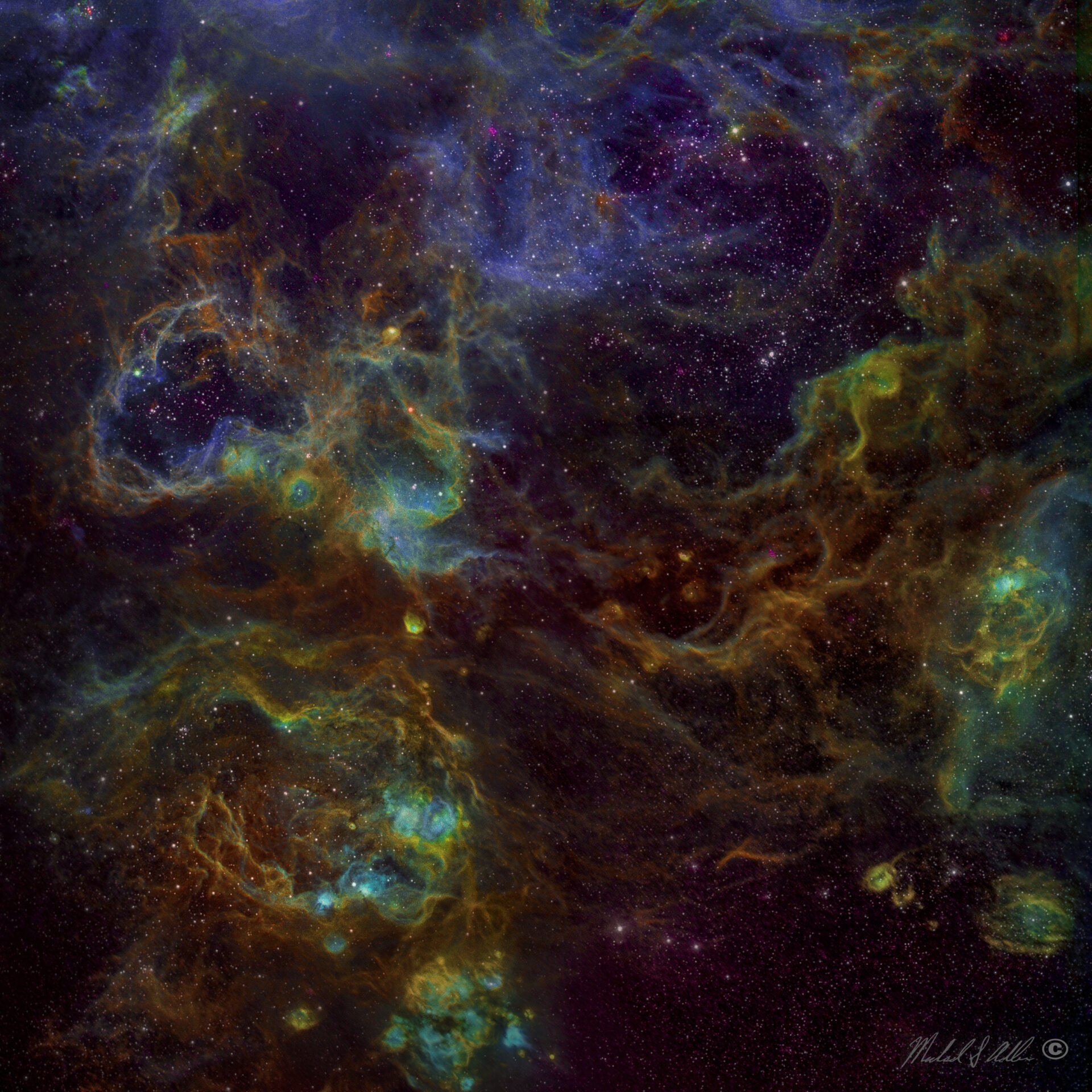Optics: Planewave CDK17
Mount: Software Bisque Paramount ME
Camera: SBIG STXL 11002
Filters: Astrodon 3nm Sii,Ha,Oiii
Dates/Times: Separate Mosaic Images done in Nov 2021, Jan 2022
Location: Rio Hurtado, Chile
Exposure Details: SHO Image(Sulfur red, Hydrogen green, and Oxygen blue) ,Image #1, Ha,Oiii=20x30min, Sii=13x30min, Image #2 Ha,Sii,Oiii=18x30min, total 107 images, 54 hr
Acquisition: MaxIm DL
Processing: Two separate images done in MaximDl, Stars Removed in Starnet++, Images combined and processed in PS2022, Stars added back but at 60% intensity.
NGC 2077,2081 Large Magellanic Cloud
Original price was: $65.00.$52.50Current price is: $52.50.
NGC 2077,2081 in the Large Magellanic Cloud, These two nebulae are a part of the convoluted pattern of gas and dust forming the Large Magellanic Cloud(LMC). They are just south of the massive Tarantula Nebula NGC 2070. NGC 2077 is the large nebula in the lower left, NGC 2081 somewhat smaller is above. The nebula NGC 2055 is in the upper right and 2048 is in the lower right. The LMC is located at a declination of -69 degrees in the southern constellation Dorado and is only visible from the Southern Hemisphere. About 180 thousand light-years away, this region is the most violent star forming region known in the whole Local Group of galaxies. This distance is further away than any part of the Milky Way itself which is 110 thousand light years in size. The blue color is due to Oxygen emission, the green color is from Hydrogen emission and the red color is due to Sulfur emission. Intense radiation, stellar winds and supernova shocks energize the nebular glow causing the emission and shape the spidery filaments. The field of view spans about a degree or two full moons in size. If this region were closer, say 1,500 light-years distant like the local star forming Orion Nebula it would take up half the sky. The image data was taken from a remote telescope located Rio Hurtado Chile and assembled in Jackson Hole into the image here . Two separate images were done because of the size of this large object and then combined.


